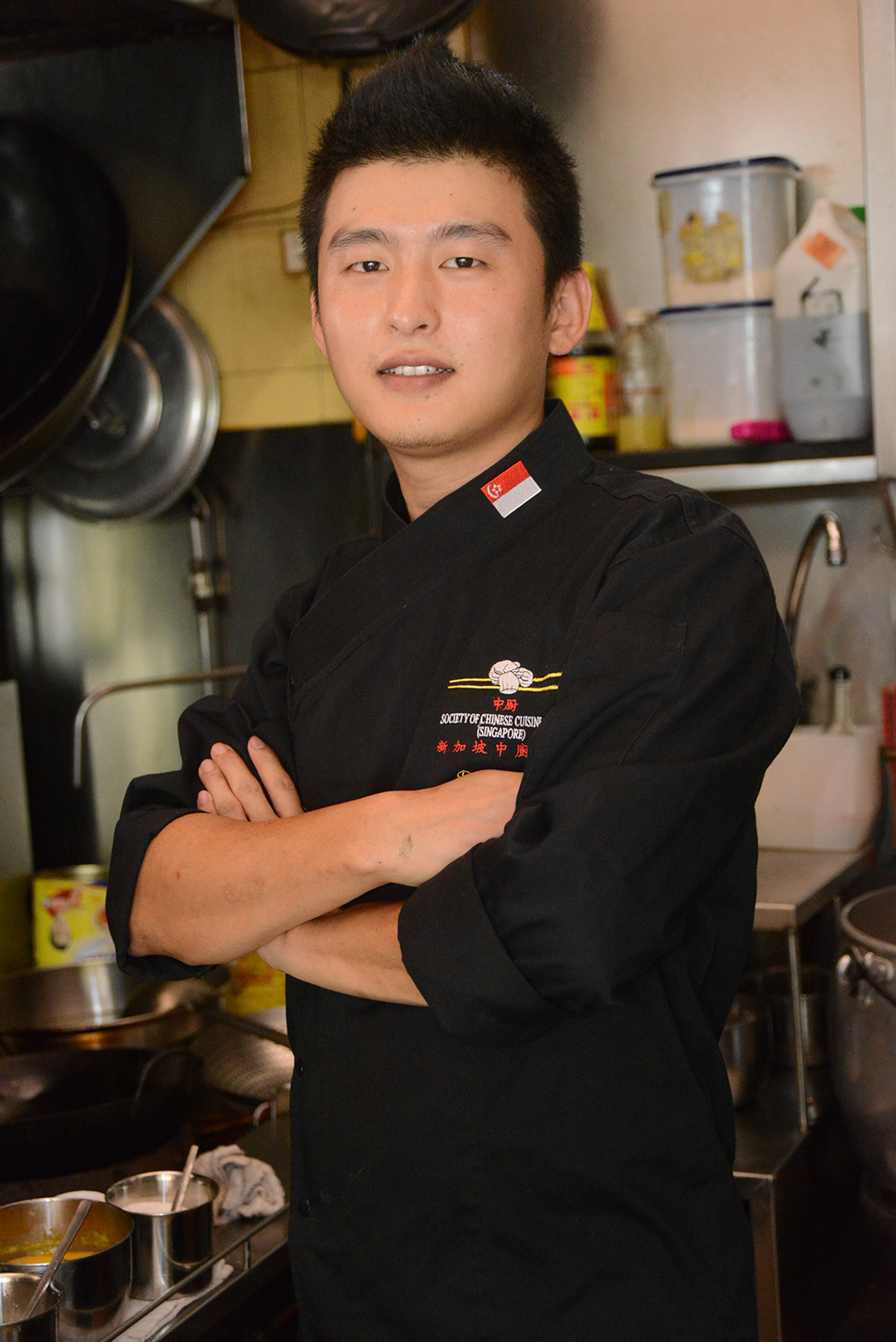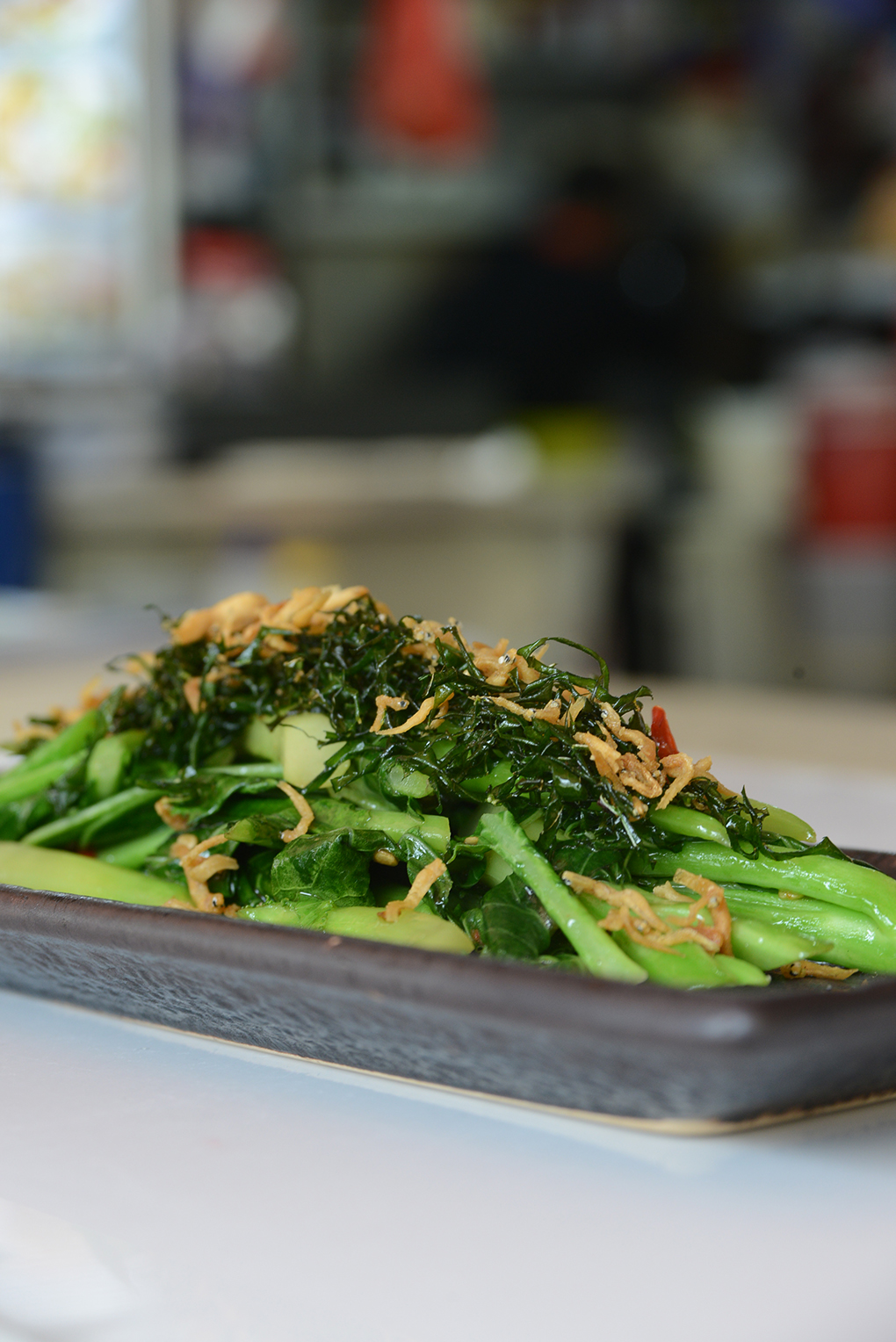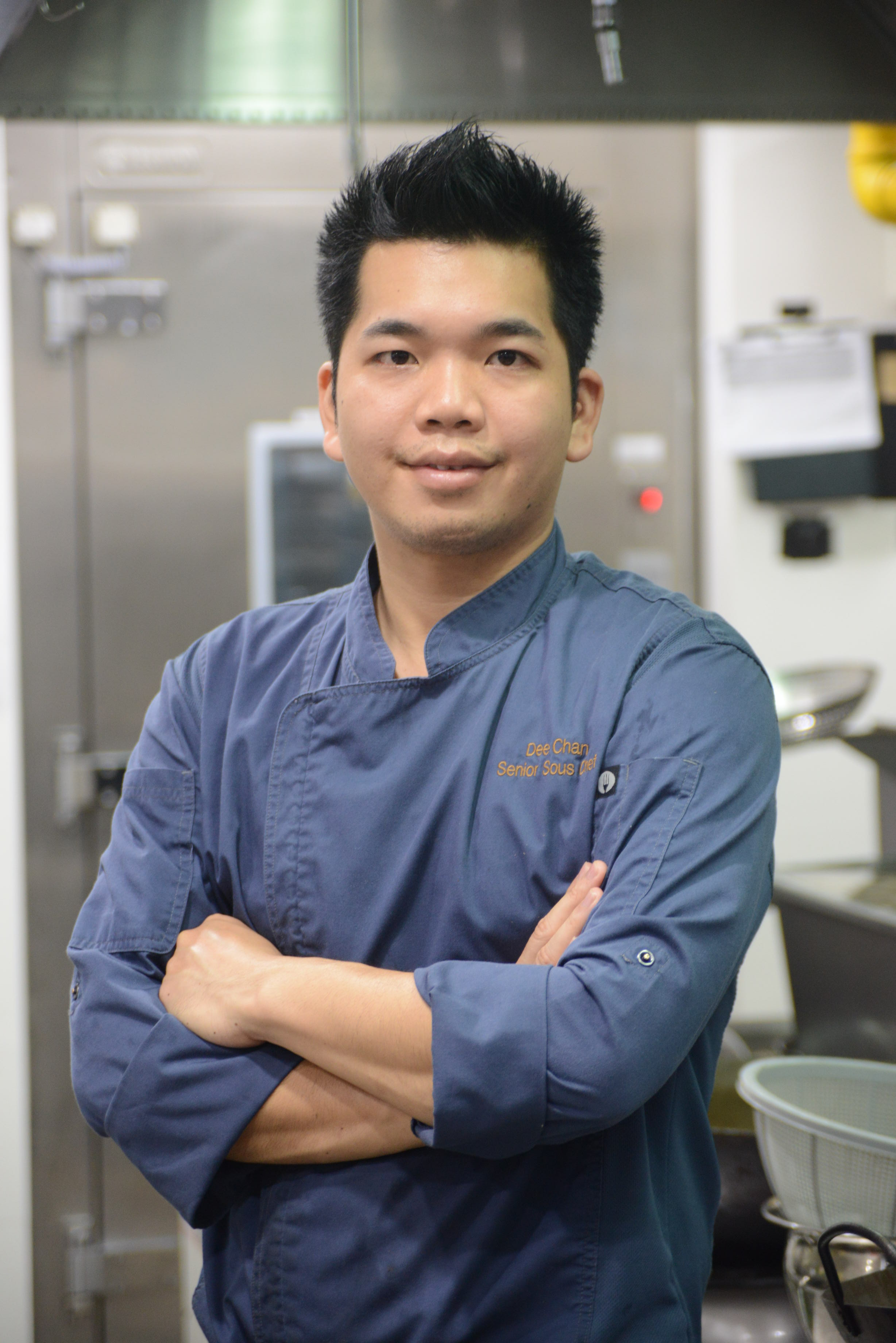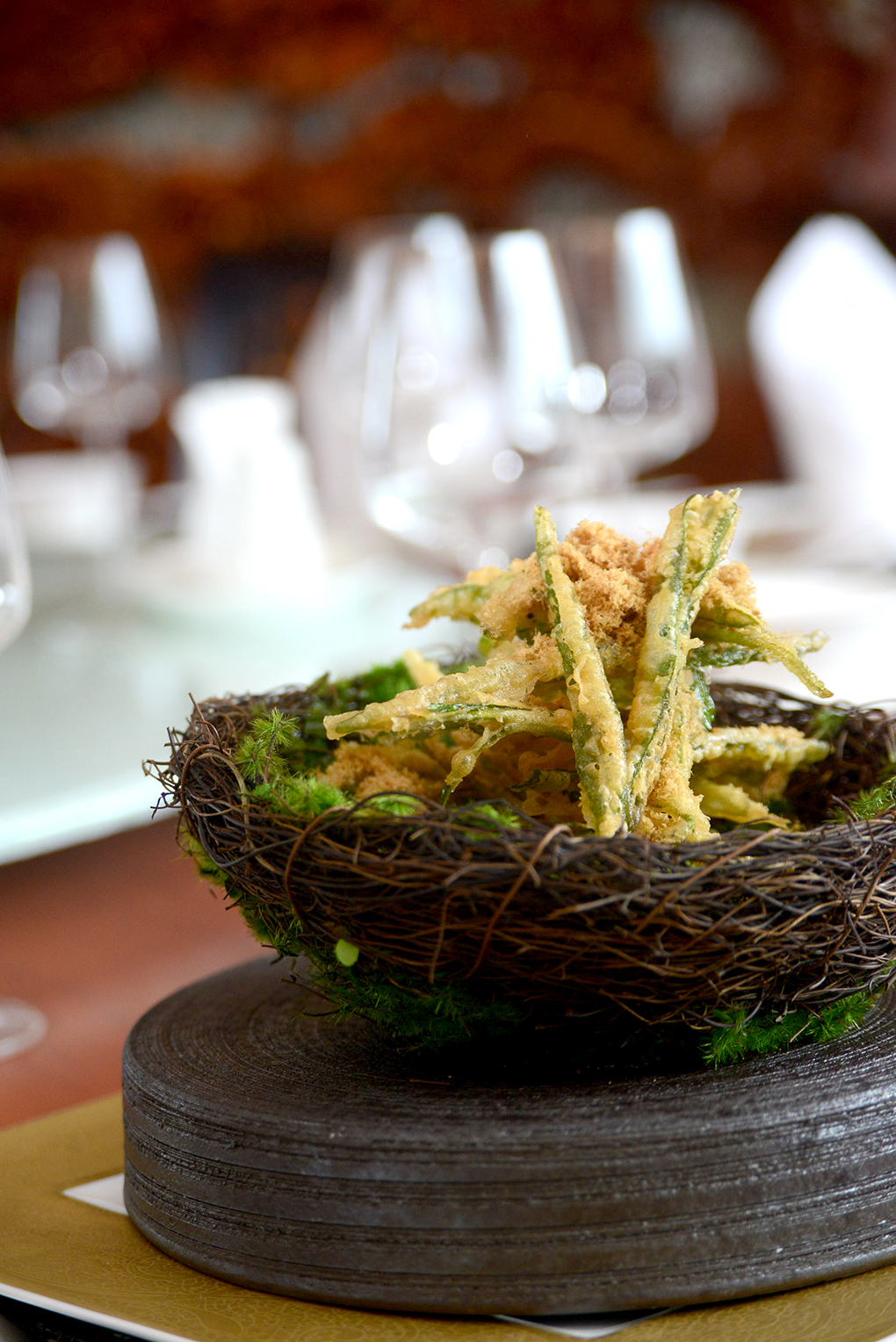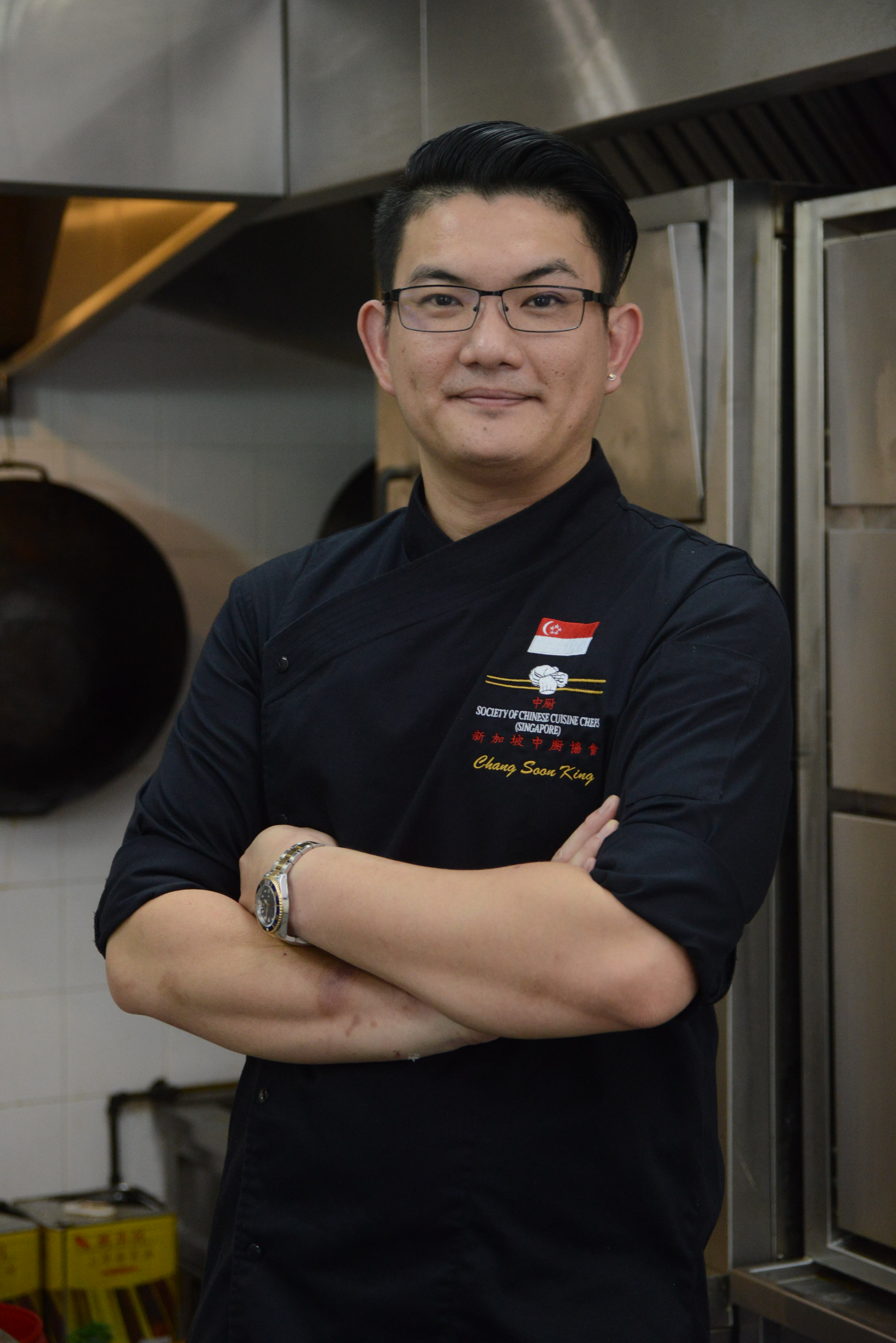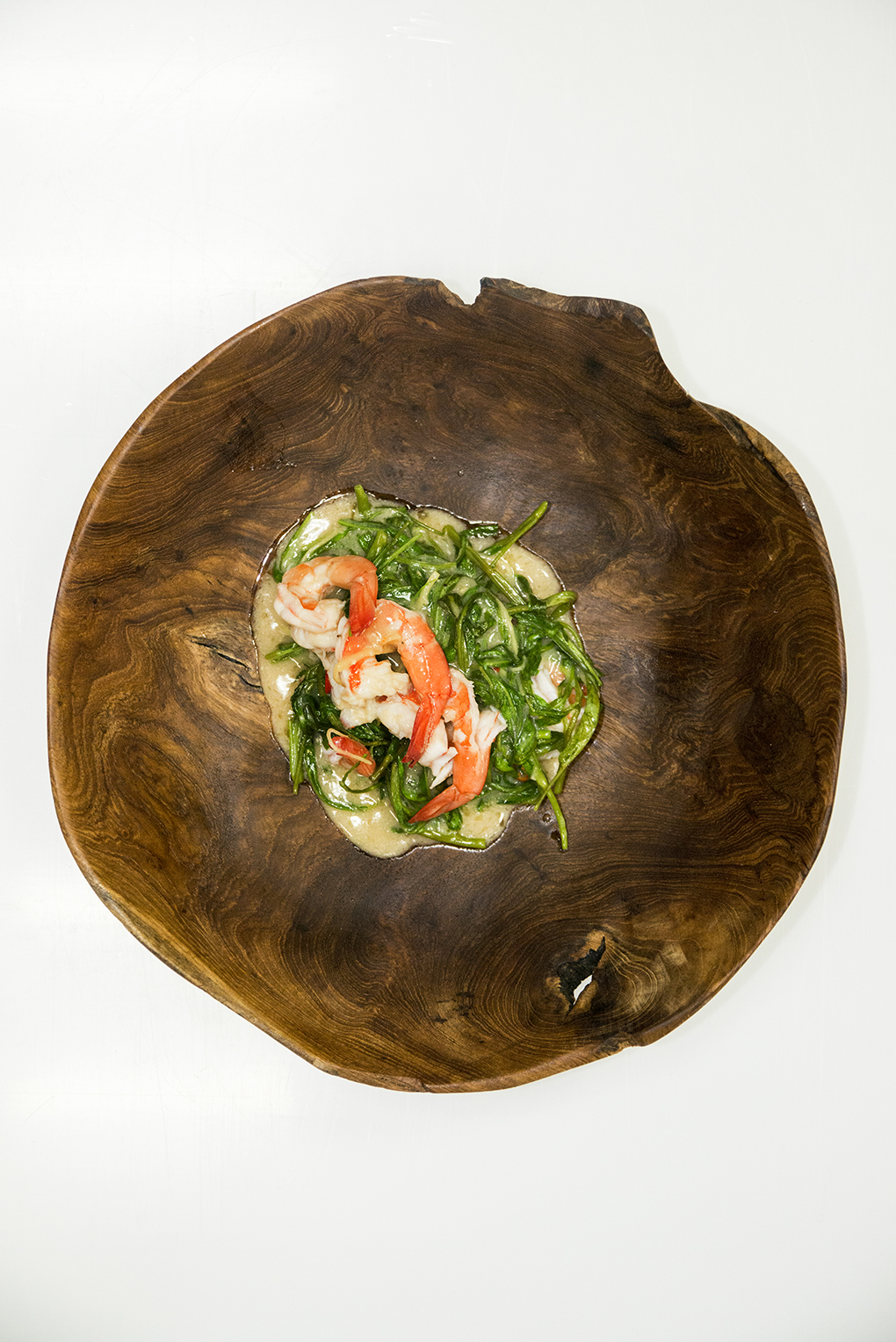Finish Your Vegetables!
by CWA (Reuben Oh)
@ 02 Nov 2018
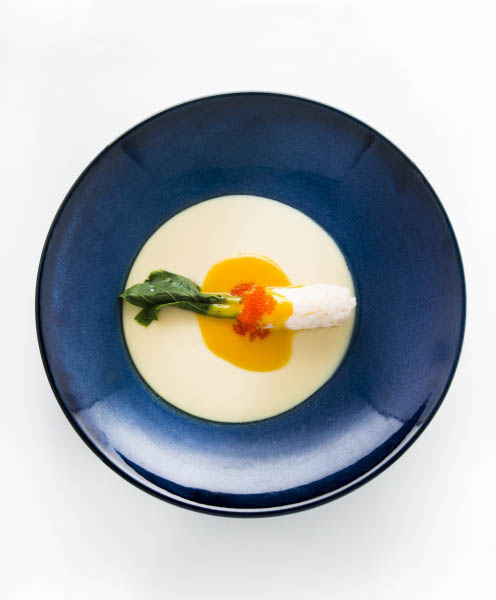
I’m feeling lucky to be Chinese. No, it’s not the relative economic stability or healthy income average that’s got me gratuitous, it’s the nostalgia of home-cooked greens in thick sauces that we’re always going back to. I mean, how can you be Chinese (or Asian in general, for that matter) in this country without memories of an angry mother stuffing vegetables down your throat?

I don’t know about you but when it comes to Chinese greens I’m of the opinion that we have some of the best around. Kai lan, kang kong, sweet potato leaf – they’ve all got their unique flavours and textures that make them a match made in heaven with the heavy-set sauces that are ubiquitous to Asian cuisines, and really no where else. There’s a certain pride that can be had in that. Take kang kong for example: in some states in the U.S. it’s banned from being served in restaurants for being a “noxious weed”. We, however, fry it by the crateful with large dollops of sambal, and surprisingly have managed to escape the “noxious” bits. Meanwhile, the U.S. is still drowning in uneaten kang kong.

Riding the wave of strong nationalistic sentiment (and maybe a bit of inflated pride), I dialled up one of our very own local producers of Chinese greens, Quan Fa Organic Farm to ask for some of their vegetables. They somehow agreed to indulge me, and now I’m putting their high quality produce into the hands of five young, skilful Chinese cuisine chefs from different backgrounds to taste, and subsequently create creative gastronomic homages to nostalgia. All this on a strange whim to relive some notion of a collective Chinese experience – I really don’t know what I’m trying to prove here.
China-born, Singapore minted Chef Cao Yong from his cozy hawker stall Gong Xi Fa Cai Eating House has taken sweet potato leaves and cooked them in the ultimate Chinese guilty pleasure, pork lard. The leaves soak up the pork-flavoured oil like wet tissues, and as I take a bite I’m wondering if the health benefits of the leaves outweigh the amount of bodily sins I’m racking up from this tasting.
With Quan Fa Organic Farm’s kai lan, he’s created a dish that highlights the crunchiness of the produce by, well, making it more crunchy. Slivers of dried chilli and fried smelt adorn the top of the dish giving it a bit of a spicy kick – a well complement to the natural sweetness of the vegetable.
Chef Dee Chan’s a Hong Kong native seeking out culinary stardom down in our little red dot. For nostalgia, the sous chef from Novotel Hotel On Stevens is going back to his roots, as evidently portrayed by his kai lan fried with beef. It is, he sweetly reminisces, as Hong Kong as kai lan can ever get. The kai lan leaves mop up the thick, almost soupy sauce in a canton medley of sweet, salt and bitterness, with the stalks lending a crunchy respite in between.
Any experience with sweet potato leaves would impart you with the knowledge that they pair unbelievably well with savoury flavours. Playing on this, his dish hits all the right notes. Semi-cooked in boiling water, the sweet potato leaves are thrown into a stir-fry with shrimp, garlic, and scallop sauce, mixing in savoury with the mild sweetness of cooked sweet potato leaves – you’d hardly notice you’re eating vegetables.
Chef Edward Chong is no small player in the Chinese culinary scene; he recently rose to helm Marina Mandarin’s Peach Blossoms as its Executive Chinese Chef. No small part of that achievement can be attributed to his keen creative edge in a cuisine that can be notoriously rigid in its processes. He wraps a single stalk of the kai lan in roe grained shrimp paste, steaming it and setting it prettily on a bed of steamed egg. It looks almost too, but not just quite, good to eat.
Straight putting it out there, I’m probably slightly biased with his next dish: I have an unhealthy obsession with meat floss. But deep frying kang kong in batter and serving it with a generous pile of chicken floss of top – it’s defying all that we know about the vegetable. He’s turned your sambal home meal favourite into a crunchy, ostensibly healthy bar snack. Now all it needs is a beer to go with it.
Chef Chan Soon King, Malaysian and Senior Sous Chef at the Grand Copthorne Waterfront hotel, has taken things a bit more conceptually. His kai lan dish is a paid respect to the very first dish that he cooked up in his kitchen career. Think the deep dark, salty savouries of the black bean paired with the richer, dense flavours of the salty fish – a winning contrast to the kai lan. Somewhere along the crunchy chew, I’m suddenly reminded of thick Cantonese soup.
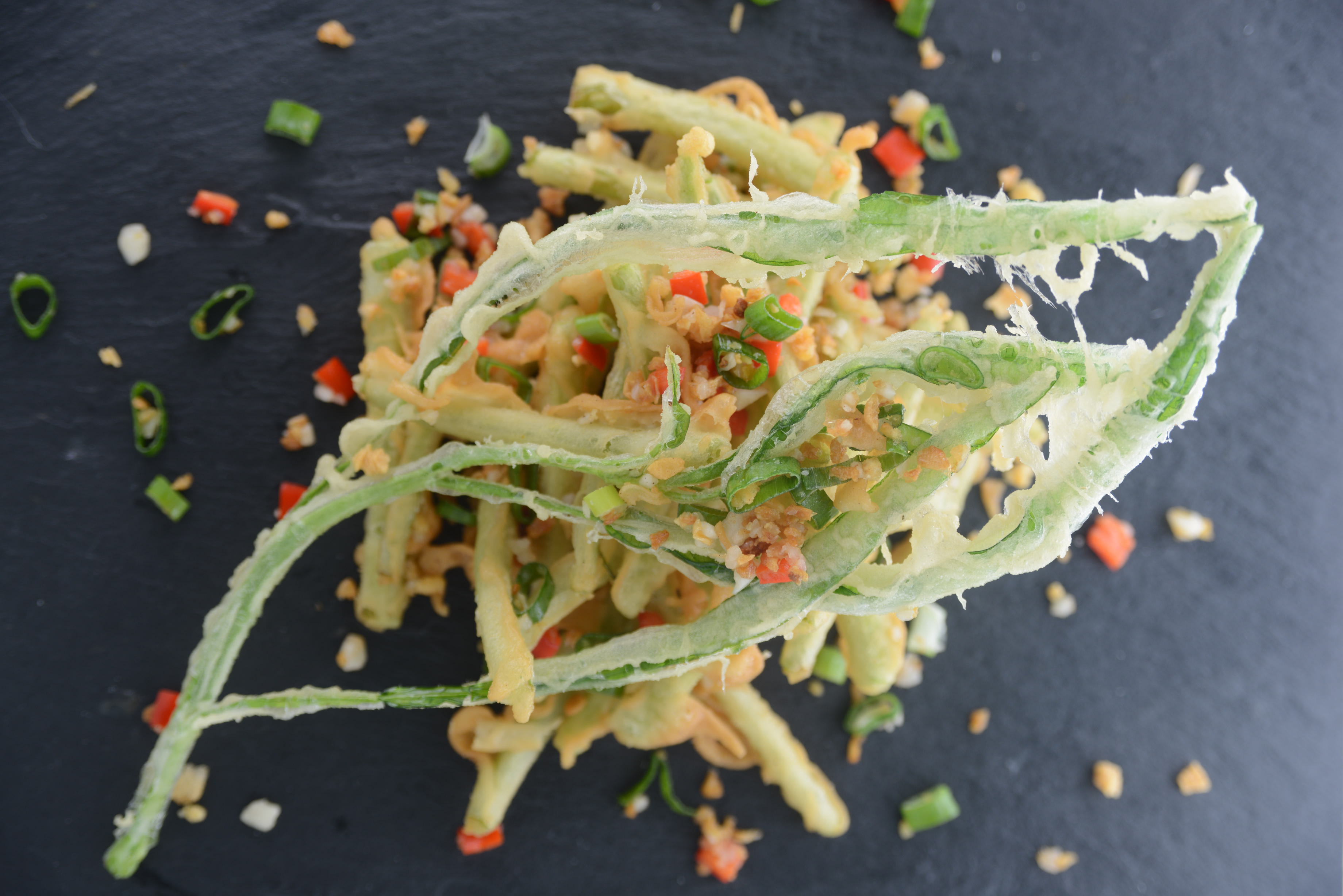
I feel that there’s something about deep-frying kang kong that really mesmerises these chefs. Is it the texture of the leaves? Is there a secret magic within the leaves that can only be released with a thorough battering? Or maybe its just a tempestuous touch of rebellion towards the stalwart stronghold of the Cantonese cuisine? For Chef King, it’s (thankfully) something a lot more practical. When kang kong is delivered to the kitchen, it comes with a bit of old leaves in the mix. They have to be trimmed off, lest they ruin the taste of the dish. This though, takes time and also produces quite a bit of wastage. The answer? Deep-fry the hell out of it.
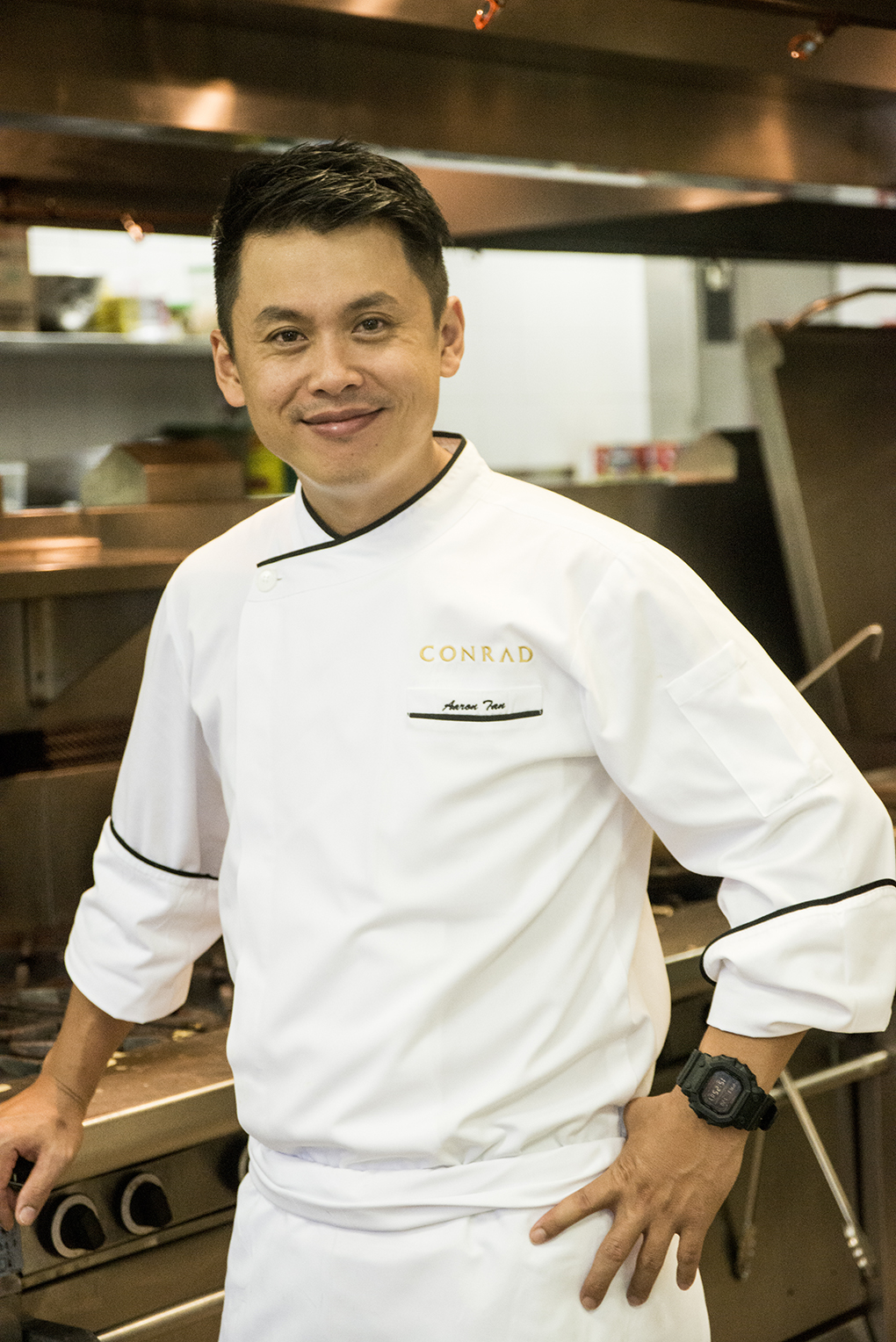
Ending this off, we’ve got a round of the classics that all Chinese, whether Malaysian, Singaporean or from the glorious mainland, can love. The young and very healthy-looking Chef De Cuisine at the Conrad Centennial, Malaysian Chef Aaron Tan, stir fries sweet/bitter kai lan with garlic, oyster sauce and a swig of Chinese wine. It’s the ultimate savoury vegetable dish that’s on the menu of almost every zi char restaurant in this country, and our friendly neighbour’s - and one that I doubt anyone will be getting sick of anytime soon.
If you thought vegetable dishes couldn’t be crack-ish, think again. Strands of kang kong are stir-fried in preserved soy bean and sesame oil, folding every last drop of intense flavour between the green tenders. In the end, the sweet, freshly steamed prawns are just a small bonus to this timeless combination. It’s crazy addictive, and a classic that would probably even outlive our children – if they remember to finish their vegetables.
 I’m feeling lucky to be Chinese. No, it’s not the relative economic stability or healthy income average that’s got me gratuitous, it’s the nostalgia of home-cooked greens in thick sauces that we’re always going back to. I mean, how can you be Chinese (or Asian in general, for that matter) in this country without memories of an angry mother stuffing vegetables down your throat?
I’m feeling lucky to be Chinese. No, it’s not the relative economic stability or healthy income average that’s got me gratuitous, it’s the nostalgia of home-cooked greens in thick sauces that we’re always going back to. I mean, how can you be Chinese (or Asian in general, for that matter) in this country without memories of an angry mother stuffing vegetables down your throat?

